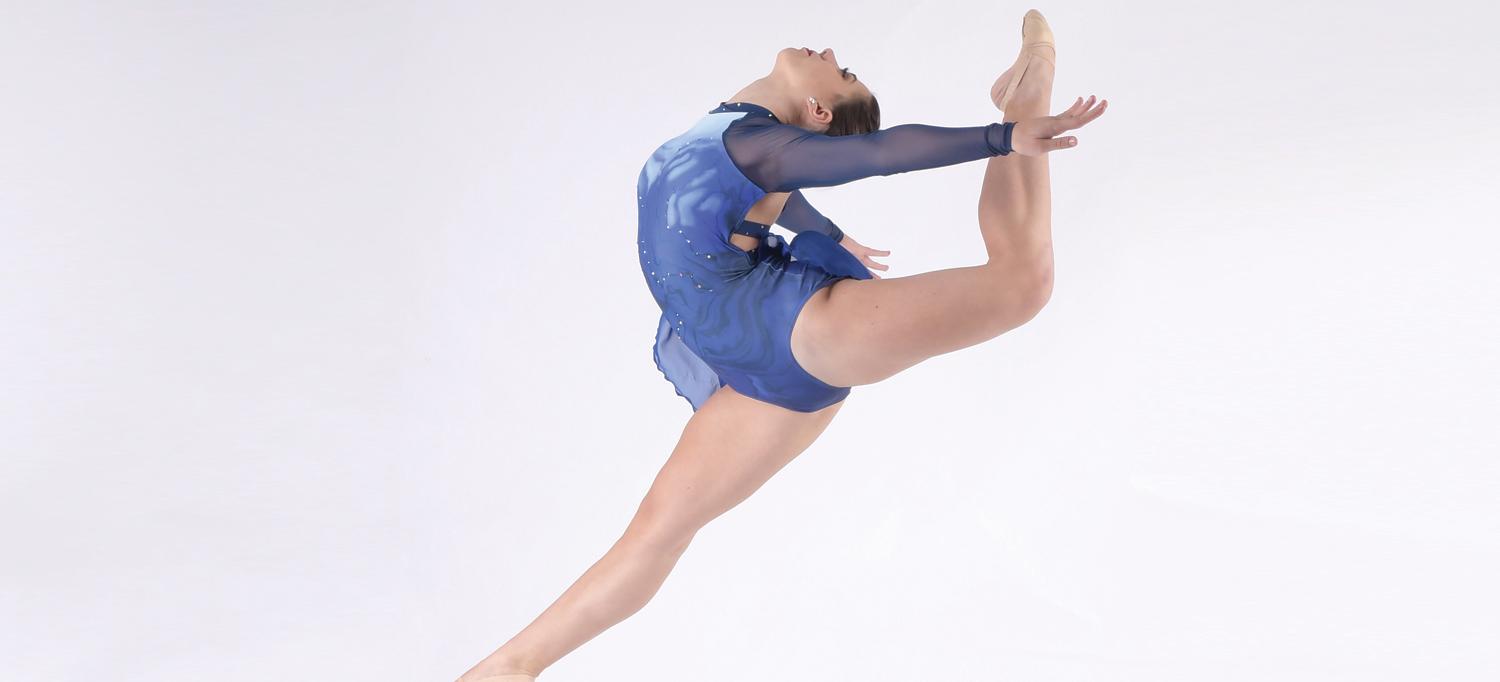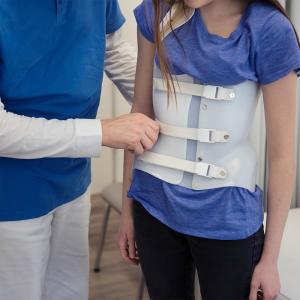
After Jenna Moriello’s surgery in June 2020, her curvature was reduced from nearly 70 degrees to a negligible 20 degrees. By September, she was able to return to dancing without restrictions.
Photo: DSM Productions
Jenna Moriello tried her best to draw attention away from the dramatic curve in her spine, but the malformation was hard to hide in a dancer’s skintight bodysuit. By her freshman year at the Union County Academy for Performing Arts high school in Linden, New Jersey, her condition, called scoliosis, was worsening, causing far more than emotional distress; the chronic back pain forced her to continually compensate for her misalignment. An X-ray in November 2019 revealed a curvature of nearly 70 degrees; anything over 50 degrees is considered severe. “My spine was shaped like an S,” says Jenna, now 16. “I started to look for it in photographs and videos of me dancing. It didn’t help that I was in a leotard in front of a mirror every day. That made me insecure.”
The corrective back brace Jenna wore at night, a remedy that prevents the condition from progressing in many of the 6 to 9 million Americans with the condition, primarily girls and women, wasn’t working. With Jenna hiding her body in oversized clothes, and with the risk that her curvature could ultimately impede her lung function, her mother, Danielle, knew that surgery couldn’t wait much longer. However, she was afraid of the standard procedure, fusing two or more vertebrae together to straighten the spine, because it limits a patient’s flexibility. “I worried about the impact of such a surgery on a 14-year-old, especially a dancer,” Danielle says.
While she weighed the pros and cons, Danielle heard through a Facebook group about a surgical alternative recently approved by the U.S. Food and Drug Administration, called vertebral body tethering, or VBT. The novel approach restrains one side of the spine with a flexible polymer cord threaded through screws attached to the side of affected vertebrae, allowing the opposing side to straighten naturally as a child grows. Unlike a fusion rod, the tether doesn’t reduce mobility. Finding no local providers who offered it, Danielle reached out to one of leading practitioners of the technique, Juan Carlos Rodriguez-Olaverri, MD, PhD, at the Centro Médico Teknon in Barcelona, Spain. As chance had it, Dr. Rodriguez-Olaverri, renowned for treating adolescent athletes with spinal deformities, had just accepted a position at NYU Langone Health as director of early onset scoliosis.
The pandemic delayed Dr. Rodriguez-Olaverri’s arrival, but he met the Moriellos in the spring of 2020, reviewed Jenna’s case, and recommended the procedure. “Fusion surgery would have stopped Jenna’s dancing career,” says Dr. Rodriguez-Olaverri. “If I can give her four more years of doing what she loves, that’s wonderful.”
A pioneer in his field, Dr. Rodriguez-Olaverri tested many versions of VBT. Despite design improvements, there remains a one-in-five chance that the cord, pulled taut, will tear within two years. To reduce that risk, he uses two sets, side-by-side, reducing the breakage rate to less than 5 percent. He is one of only two surgeons globally to use CT imaging to facilitate placement of the titanium screws during the six-hour procedure.
When Jenna left Hassenfeld Children’s Hospital at NYU Langone in June 2020, 5 days after surgery, her curvature measured a negligible 20 degrees. She spent the summer adjusting to her new alignment. In September, she returned to dancing without restrictions. “I felt surprisingly normal,” she says.
By this spring, Jenna had grown an inch—helping to straighten her spine further—and Dr. Rodriguez-Olaverri had completed 50 VBT surgeries at NYU Langone, a great majority for children and teenagers who traveled from other states or nations to see him. He delights in the postprocedure videos they share: figure skaters able to resume jumps, gymnasts doing flips, and baseball players back on the field in as little as four to six weeks. “We’re helping these patients continue to be competitive athletes,” he says. “You can always do fusion later on.”
Learn more about spine health from our experts in Your Spine: An Operator's Manual.

